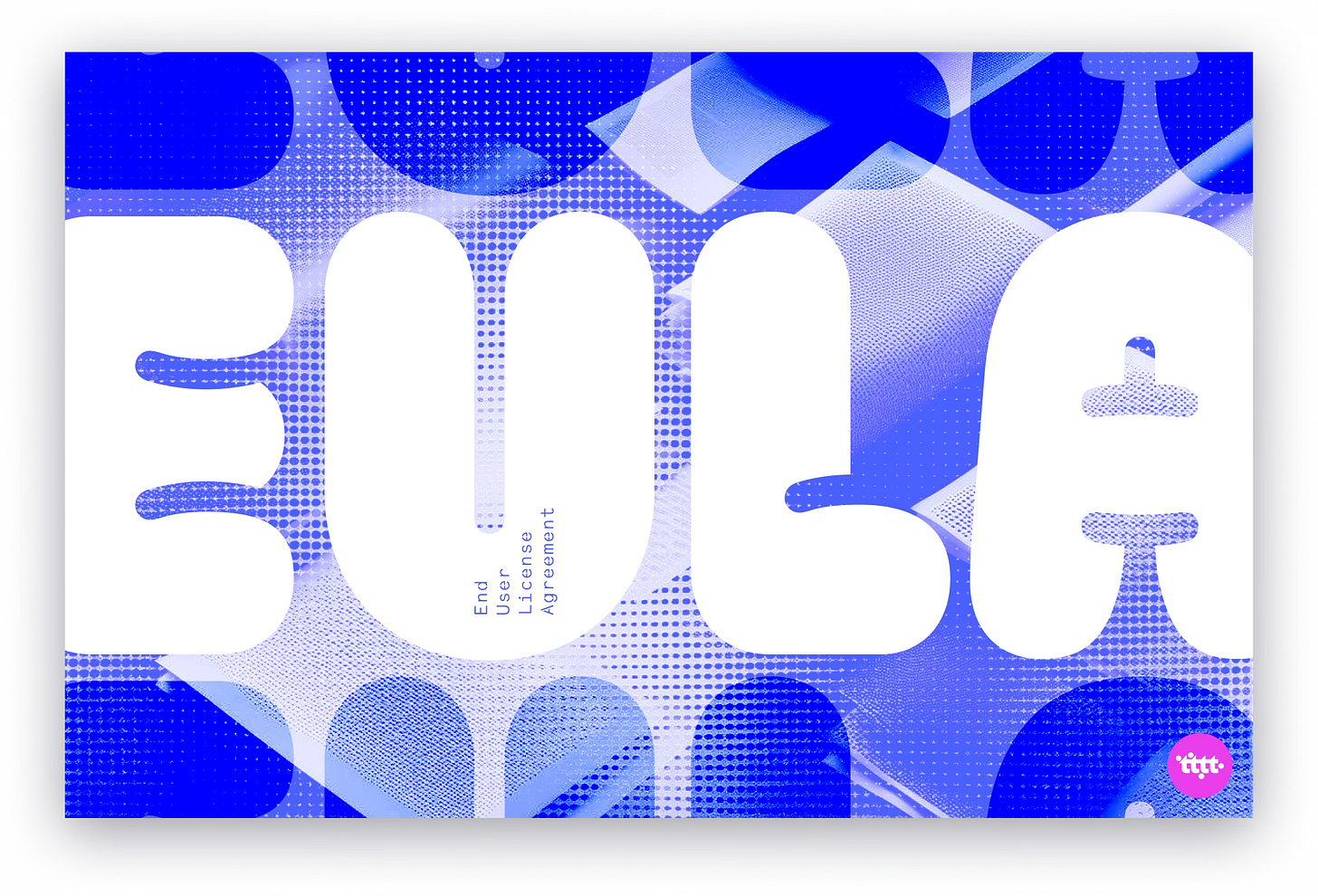The License to Type
Today, we get nerdy. And maybe also learn that we’ve been criminal masterminds using the wrong licenses for the wrong use-cases this whole time. Who knows? A regular Tuesday, amirite?
Let’s fix some of that, shall we?
Our issue today is all about font licensing—
What is it? Why does it exist and matter?
What’s EULA? “You-ella?”
What are the different types of font licenses, and how do you choose the right one?
What are some best practices and maybe, above all, how to avoid getting sued?
*insert disclaimer that I am no legal expert. I’m barely a type expert*
First and foremost, it’s important to remember that fonts are software. Every single style is a separate piece of software.
Font licenses vary widely depending on factors such as usage, number of users, and distribution methods. Here are some common types of font licenses:
🖥️ Desktop License allows you to install and use the font on a specific number of computers. It’s suitable for projects like print design, presentations, and documents created on a local machine.
🌐 Web License, for websites and online projects. This permits you to embed the font into your website’s code, ensuring consistent typography across different devices and browsers.
📱 App License grants you the right to incorporate the font into your application’s interface when designing mobile apps or software.
🗄️ Server License for when creating products where users can customise and generate content dynamically (like personalised merchandise).
📕 eBook License for digital publications where the font appears as intended on eReaders and other devices.
🎞️ Broadcast License for fonts used in television, film, or other broadcast media, keeping in mind the font’s potential exposure and visibility.
So, if there’s a typeface you like for a certain project,
First pick the styles (such as medium, bold-italic, etc) you’ll need.
Next, find the appropriate license based on your use-case. Pro-tip: logos/wordmarks often require desktop or a special ‘logo license’. Be sure to see the license options available on the foundry website.
Lastly, know how many ‘users’ or ‘devices’ the font will be installed onto to be used as the font. For example, if your client’s design team has 3 designers, it’s likely each of them will be using the font to create designs, so each is a ‘user’. On the contrary, if the Head of Marketing is reviewing designs as images or PDFs, they don’t need a separate license since they’re not using the font software and the text is not editable.
Usually, it’s recommended the font be licensed in the name of the client or ‘end-user’. And that bring’s us to—
EULA, or End-User License Agreement
Remember, fonts are software. So, when you “buy a font,” what you’re buying is a license to use font software in specific ways. These ways are described in your EULA, which is the legally binding contract between the type foundry and you (or the client).
It’s a pretty standard contract. Here’s an example from Hoefler&Co.
And for all our organisation nerds…
If you’re someone (like me) who has a ton of trial and licensed fonts downloaded across the years with no meaningful way to recall them, you’ve probably wondered how to keep track of what to try, what you’ve used and how they can be organised. (FWIW, Mac’s Font Book is not horrible, but I think it could be better)
So, I’ve heard a ton of good things about Typeface App – a font manager for Mac. A disclaimer that I haven’t personally used it because I’ve committed to building my mind palace in Eagle, but Typeface has a free trial—so definitely worth a shot!
That’s it for today, folks.
Next week, we dive into our second edition of ‘Getting Schooled: Type@Cooper’. Would love to hear what yawl thought of our first issue last week—any feedback, follow-up questions or comments?
And remember, all through this month, we’re doing tttt every week. And in July, we go back to our regular programming, every fortnight.
Hope you have a wonderful week!
🌈 Sneha.




